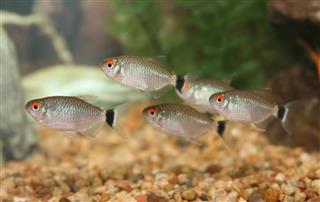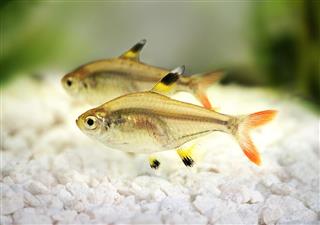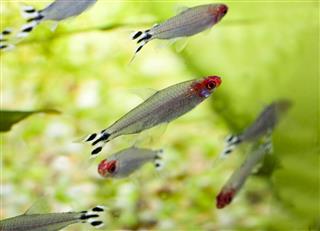
Come along and get detailed information on the various aspects of tetra fish care; its housing, diet, breeding, and so on.
Tetra fish are primarily freshwater fish belonging to the Characidae family, which are found in Africa, Central America, and South America. They are distinguished from other small fish by the miniature adipose fin in between the dorsal and caudal fins. Tetra species are popular among hobbyists as they are beautiful and easy to care for.
Common Tetra Fish Species
- Adonis tetra (Lepidarchus adonis)
- Arnold’s tetra (Arnoldichthys spilopterus)
- Bandtail tetra (Moenkhausia dichroura)
- Beacon tetra (Hemigrammus ocellifer)
- Black neon tetra (Hyphessobrycon herbertaxelrodi)
- Callistus tetra (Hyphessobrycon eques)
- Central tetra (Astyanax aeneus)
- Dawn tetra (Aphyocharax paraguayensis)
- Discus tetra (Brachychalcinus orbicularis)
- Emperor tetra (Nematobrycon palmeri)
- False neon tetra (Paracheirodon simulans)
- False red nose tetra (Petitella georgiae)
- Glass tetra (Moenkhausia oligolepis)
- Gold tetra (Hemigrammus rodwayi)
- Jumping tetra (Hemibrycon tridens)
- Lemon tetra (Hyphessobrycon)
- Longjaw tetra (Bramocharax bransfordii)
- Mayan tetra (Hyphessobrycon compressus)
- Naked tetra (Gymnocharacinus bergii)
- Oneline tetra (Nannaethiops unitaeniatus)
- Panama tetra (Hyphessobrycon panamensis)
- Penguin tetra (Thayeria boehlkei)
- Rainbow tetra (Nematobrycon lacortei)
- Red eye tetra (Moenkhausia sanctaefilomenae)
- Ruby tetra (Axelrodia riesei)
- Savage tetra (Hyphessobrycon savagei)
- Sharptooth tetra (Micralestes acutidens)
- Silver tetra (Gymnocorymbus thayeri)
- Tailspot tetra (Bryconops caudomaculatus)
- Uruguay tetra (Cheirodon interruptus)
- Yellow-tailed African tetra (Alestopetersius caudalis)
Tetra Fish Care
Before you introduce your pet tetra to its new home, you have to set up the tank. So, fill the bottom of the tank with gravel or sand and dechlorinated water. If you are keeping 50 – 80 tetras, then a 20-gallon tank will be good enough. Thereafter, add other things to the tank to give it the look of a natural surrounding. It’s a good idea to add plants to the tank as they serve as ideal hiding places for these fish, which hardly fancy being in open spaces.
After you are done setting up a home for your tetra, do not ignore the importance of cycling the tank water. Regular cycling ensures uniform distribution of nitrogen and ammonia throughout the water. Now it’s the time when you can usher the fish into their new home. The fish will take some time before they get used to their new surroundings.
Coming to the food choices, it is important to understand that the tetras are mid-tank swimmers. They tend to ignore food that falls to the bottom of the tank and instead, come to the top to feed. It is advisable to feed them as much as they can consume in three minutes. If the experts are to be believed, feeding them small portions of food several times a day is better than giving them large portions.
As these fish seldom overeat, you don’t have to worry about this aspect of feeding. However, leftover food or excess food portions can easily pollute the water and this will be quite a bit of headache for you to take care of. Though tropical flake food and freeze-dried treats are popular with tetra fish, their health might get degraded if their diet is not supplemented with live food. Live plant matter is also good for these fish.
In the wild, tetra only breed during the rainy season. In aquarium, however, year-round breeding is common. For breeding, adults should be fed plenty of frozen foods and the water should be kept soft, slightly acidic, with blackwater extract added. Dimly lit the tank and keep the water at a temperature of 72° – 78° F. Use fine-leaved plants or an artificial spawning mop to collect the eggs. It is recommended that after spawning the parents must be removed. Generally, 1 – 3 days is what is required for the eggs to hatch. Feed the fry with very fine live foods. In order to keep the quality of water high, change it daily.













